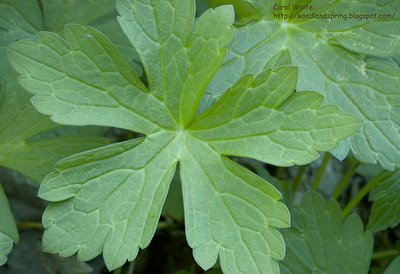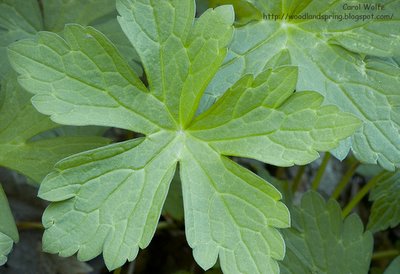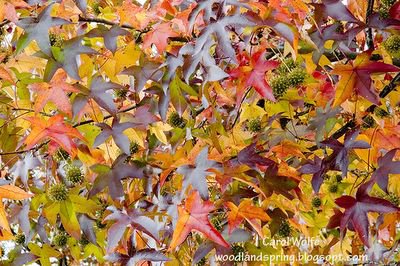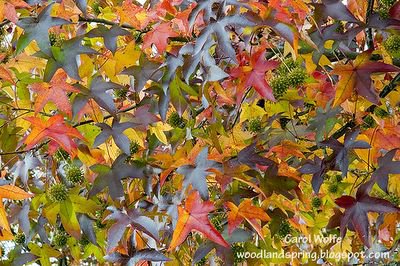
Hand-held snapshot with pretty good compostion, May 20, 2005
On this day, I was walking through the forest with other people. As I usually do in this type of situation, I brought my camera and a wide-angle zoom, but not my tripod. This is a hand-held shot of False Solomon's Seal. Though I kind of like this photo, the purpose was merely documentation. I wanted to remember where I had seen the plant, and the date.
Below is a better photograph of False Solomon's Seal, which I originally posted here on November 16.
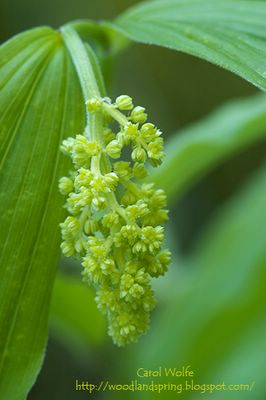
Carefully-composed image using tripod, May 3, 2005
I like the soft lighting of this vetical composition, as well as the overall arrangement of elements (leaves and buds). I also like the way the camera was able to capture such a close-up view, showing some of the texture of the greenish-white buds.
While looking through my photos from nature walk on May 20, I found this additional snapshot of False Solomon's Seal

Hand-held snapshot with poor composition, May 20, 2005
This third view of False Solomon's Seal is definitely my least favorite. I include it here mostly to show what a difference it makes to have a good composition. In the first photograph, the plant shows up nicely and the background also looks good. There are no obvious distractions or major problems. However, in this third view, the background has too many colors, haphazard shapes, and uneven lighting. On top of that, those flies climibing up the stem are distracting and ugly. Of course flies do occur in nature and can make a good photograph, but if I wanted to photograph flies, I would have wanted to get much closer so you could really see them well.
Aside from "instructional" entries like this one, my goal on this website is to post only the best images of wildflowers, and other scenes in nature. I want my images to help people learn about wildflowers, and also appreciate their beauty.







